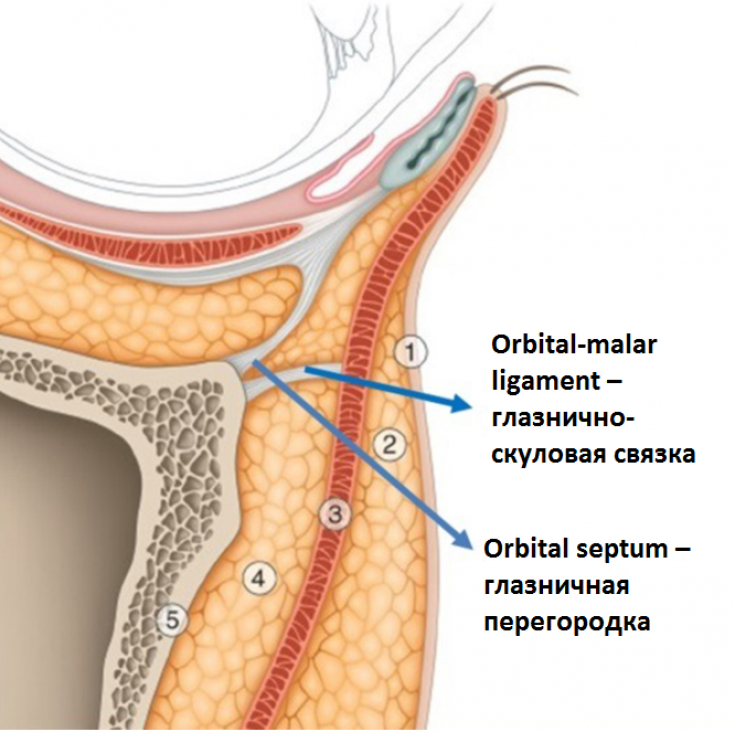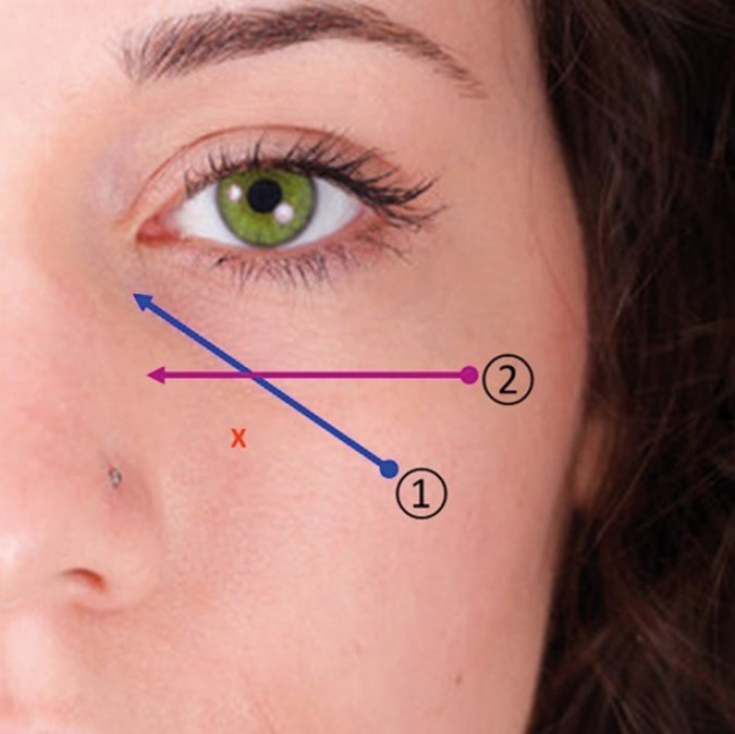Often restoration of volumes in the infraorbital region provides an excellent rejuvenating effect. Recently, HA fillers have been increasingly used for these purposes, as the constant improvement of formulas and techniques allows us to offer patients a safe and effective alternative to surgical blepharoplasty.
HA fillers are ideal for correction of the infraorbital zone and provide long-term results, and in case of product migration or overcorrection, unwanted effects can be eliminated by injections of hyaluronidase, which is also an undeniable advantage of products of this type.
About his technique of rejuvenation of the infraorbital region with HA injections – Two-Point Eye Lift™ – tells Dr. Kieren Bong.
Anatomy and pathogenesis of aging of the infraorbital region
The safety and effectiveness of rejuvenation of the infraorbital region depends on a deep understanding of the anatomy of this zone, which is based on the orbit of the eye. Above the bone structure infraorbital area
(Fig. 1) formed by:
• leather;
• superficial fat compartment;
• circular muscle of the eye;
• infraorbital fat;
• periosteum.

Fig. 1: anatomy of the infraorbital zone
The infraorbital area is prone to early signs of aging. The protrusion of the lower eyelid appears mainly due to age-related weakening of the orbital septum, accompanied by pseudohernia of the infraorbital fat. With aging, thinning of the skin, bone resorption, muscle atrophy and loss of adipose tissue volumes are also observed, which lead to the formation of the nasolacrimal and palpebromalar grooves in the infraorbital cavities.
Correction of dark circles under the eyes: the most effective procedures
In addition, the loss of volume in the middle third of the face along with the displacement of the malar fat compartment makes the lower orbital ridge more pronounced. As a result of this, a noticeable depression appears on the surface of the skin, but the length of the lower eyelid increases.
Two-Point Eye Lift™
Practitioners embarking on infraorbital rejuvenation with HA fillers should have relevant experience with such products, as well as an understanding of the biochemical and clinical characteristics of the gel used.
Before the procedure, the author marks the upper and lower borders of the nasolacrimal sulcus and after active palpation – lower edge of the eye. For optimal results, some patients may require concomitant mid-face augmentation.
For optimal results, some patients may require concomitant mid-face volume replacement.
The author uses a 27 or 25 gauge blunt cannula for even filler insertion.
Two-Point Eye Lift™ provides for the introduction of the drug through two entry points, the risk of hematomas is minimized due to the work of cannulas.
The filler is injected directly above the periosteum, under the orbicularis oculi muscle, along the nasolacrimal sulcus (number 1 in Fig. 2). To soften the transition between orbital and malar fat, small aliquots of filler are accurately injected along and just below the lower edge of the orbit (number 2 in Fig. 2).
Follow us on Instagram
To avoid damage to the orbital septum, it is necessary to press the edge of the orbit with medium force with the index finger of the free hand. If possible, do not inject large amounts of filler into one point. It is better to correct the result, if necessary, 4 weeks after the first treatment.

Fig. 2: Two-Point Eye Lift™ technique
Possible adverse events during correction of the infraorbital area with HA fillers
Two-Point Eye Lift™ was developed to minimize the side effects and complications characteristic of the infraorbital region. After the procedure, ice packs can be applied to the treated areas – this will constrict the vessels.
While the risk of bruising is minimal when using a 27-gauge blunt cannula, there is a risk of damaging blood vessels if excessive force is applied.
The risk of skin surface irregularities can be reduced by using low viscosity dermal fillers. To avoid displacement of the filler, deep tissue massage is contraindicated for three weeks after the procedure.
Tyndall effect can occur with superficial HA injection and is typically seen with dispersed dermal fillers.
The risk of infection can be minimized by using an antiseptic prior to the procedure and following infection control protocols.
Two-Point Eye Lift™ – effective and safe technique for rejuvenation of the infraorbital region with HA fillers, which involves the correction of the nasolacrimal trough and infraorbital cavities.
Migration of the product in the infraorbital region is possible from a deep plane when the orbicular muscle of the eye is deflated.
There have also been cases of iatrogenic occlusion of the central tissue artery as a result of intravascular injection of a HA filler, so special care must be taken when working in this area.
Two-Point Eye Lift™ – an effective and safe technique for rejuvenating the infraorbital region with HA fillers, which provides for the correction of the nasolacrimal trough and infraorbital cavities. The risk of side effects and complications can be minimized through the correct choice of products and a good understanding of the anatomy of the target zone.
According to The PMFA Journal







Add a comment